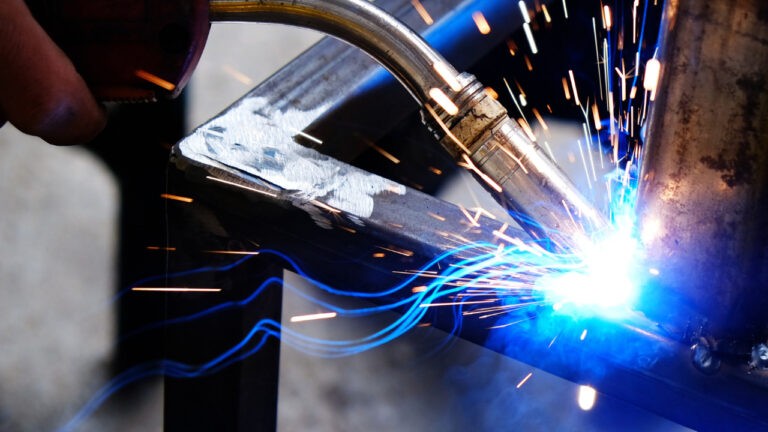Table of Contents
Toggle
Introduction:
Welding is a versatile technique used to join metals together, and it plays a crucial role in various industries. Whether you are an aspiring welder or someone looking for guidance on welding projects, understanding the basics of common welding projects can be immensely helpful. In this blog post, we will explore some frequently encountered welding projects and discuss how to approach them effectively.
Railings are important features in residential homes, commercial buildings, and outdoor spaces such as decks or balconies. They provide safety and support while also adding aesthetic appeal to the structure. If you need to repair or install railings made of metal materials like steel or aluminum, MIG and TIG welding can be suitable methods due to their versatility and ease of use. Thick materials are better suited for MIG welding, while thin materials are more appropriately handled by TIG. It is crucial to prioritize safety by wearing gloves, helmets, and protective clothing before starting any welding project.
To approach railing repair efficiently:
– Assess the damage: Begin by identifying which sections of the railing require repair – whether it’s loose joints that need reinforcement or damaged areas that need replacement.
– Prepare the surface: Use a wire brush to remove any rust or paint residue from the railing surface. If necessary, clean off dirt using solvents for better adhesion.
– Take accurate measurements: Ensure precise measurements for proper alignment during reinstallation.
– Choose appropriate filler material: Select electrodes based on the type of metal used for your railings. For instance, stainless steel electrodes work well with stainless steel railings.
– Securely fasten components: Utilize clamps when necessary to hold pieces firmly in place while welding.
Automotive repairs often involve welding tasks ranging from bodywork restoration to exhaust system fixes. When approaching automotive projects:
– Safety first: Disconnect batteries before starting any work related to electrical systems; also remember vehicles contain flammable substances like fuel – take extra precautions against fires.
– Rust removal: Before performing any welds on rusted areas, remove the corrosion using a grinder or wire brush. This step ensures proper adhesion and prevents further deterioration.
– Matching materials: Determine the type of metal being worked on – automotive welding may require different techniques depending on whether you’re dealing with steel, aluminum, or other alloys.
– Tack welding technique: For precise alignment during auto bodywork repairs, use tack welds to securely hold parts together before performing final welds.
Custom-made metal furniture offers uniqueness and durability. Welding is often used in constructing various pieces like tables, chairs, shelves, or decorative elements. Here are some tips for approaching metal furniture projects:
– Plan ahead: Create detailed sketches or blueprints to visualize the design and ensure accurate measurements.
– Material selection: Choose suitable metals that provide both structural strength and aesthetic appeal (e.g., stainless steel for outdoor furniture).
– Joint types: Decide which welding joints are most appropriate based on the desired look and functionality of the piece (e.g., butt joint for simple connections or lap joint for more complex designs).
– Finishing touches: Use grinding tools to smooth out any rough edges after welding; consider applying protective coatings like powder coating to enhance durability.
In industrial settings where heavy machinery is regularly used, equipment breakdowns can occur frequently. Understanding how to approach equipment repair through welding can save time and money by avoiding costly replacements. Follow these steps when dealing with equipment repair:
– Analyze damage thoroughly: Identify weak points that need reinforcement or broken components requiring replacement.
– Disassemble carefully if needed: Before starting repairs, disassembling equipment may be necessary – remember to document each step taken so it can be reassembled correctly afterward.
– Welding positions matter: Evaluate accessibility concerns while determining suitable welding positions (e.g., flat position vs overhead position) based on workspace constraints.
– Reinforcement techniques: Employ bracing methods or gusset plates to enhance the strength of repaired components.
Welding is an essential skill for a mobile welding company like Discount Welding And Repair. Understanding how to approach common welding projects ensures efficient and effective repairs or constructions. By following proper safety protocols, assessing damage accurately, selecting appropriate materials, using suitable welding techniques, and finishing with precision, you can successfully complete various welding projects across different industries. Remember that practice and experience are key to becoming a skilled welder capable of tackling any project effectively.
Copyright © 2023 Discount Welding And Repair LLC
